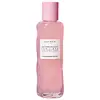What's inside
What's inside
 Key Ingredients
Key Ingredients

 Benefits
Benefits

 Concerns
Concerns

 Ingredients Side-by-side
Ingredients Side-by-side

Water
Skin ConditioningPropanediol
SolventC9-12 Alkane
SolventGlycerin
HumectantNiacinamide
SmoothingCitrullus Lanatus Fruit Extract
Skin ConditioningSea Water
HumectantGlycolic Acid
BufferingLactic Acid
BufferingSodium Hyaluronate
HumectantChenopodium Quinoa Seed Extract
Skin ConditioningLactobacillus/Watermelon Fruit Ferment Extract
Skin ConditioningLens Esculenta Fruit Extract
Skin ConditioningPyrus Malus Fruit Extract
Skin ConditioningLeuconostoc Ferment Filtrate
AntimicrobialMelia Azadirachta Leaf Extract
Skin ConditioningMoringa Oleifera Seed Oil
EmollientLeuconostoc/Radish Root Ferment Filtrate
AntimicrobialEclipta Prostrata Extract
Skin ConditioningSodium PCA
HumectantSaccharide Isomerate
HumectantHydroxyacetophenone
AntioxidantPolysorbate 60
EmulsifyingHydroxyethylcellulose
Emulsion StabilisingAmmonium Acryloyldimethyltaurate/Vp Copolymer
Caprylyl Glycol
Emollient1,2-Hexanediol
Skin ConditioningCetearyl Alcohol
EmollientSodium Magnesium Silicate
Sodium Lactate
BufferingXanthan Gum
EmulsifyingSodium Citrate
BufferingDisodium Phosphate
BufferingSodium Phosphate
BufferingCoco-Caprylate/Caprate
EmollientPotassium Sorbate
PreservativeSodium Benzoate
MaskingCitric Acid
BufferingSodium Hydroxide
BufferingParfum
MaskingWater, Propanediol, C9-12 Alkane, Glycerin, Niacinamide, Citrullus Lanatus Fruit Extract, Sea Water, Glycolic Acid, Lactic Acid, Sodium Hyaluronate, Chenopodium Quinoa Seed Extract, Lactobacillus/Watermelon Fruit Ferment Extract, Lens Esculenta Fruit Extract, Pyrus Malus Fruit Extract, Leuconostoc Ferment Filtrate, Melia Azadirachta Leaf Extract, Moringa Oleifera Seed Oil, Leuconostoc/Radish Root Ferment Filtrate, Eclipta Prostrata Extract, Sodium PCA, Saccharide Isomerate, Hydroxyacetophenone, Polysorbate 60, Hydroxyethylcellulose, Ammonium Acryloyldimethyltaurate/Vp Copolymer, Caprylyl Glycol, 1,2-Hexanediol, Cetearyl Alcohol, Sodium Magnesium Silicate, Sodium Lactate, Xanthan Gum, Sodium Citrate, Disodium Phosphate, Sodium Phosphate, Coco-Caprylate/Caprate, Potassium Sorbate, Sodium Benzoate, Citric Acid, Sodium Hydroxide, Parfum
Opuntia Ficus-Indica Extract
Skin ConditioningCitrullus Lanatus Fruit Extract
Skin ConditioningGlycerin
HumectantHyaluronic Acid
HumectantGluconolactone
Skin ConditioningSodium Polyglutamate
HumectantBetaine Salicylate
AntimicrobialSalix Alba Bark Extract
AstringentMelaleuca Alternifolia Leaf Extract
PerfumingHibiscus Sabdariffa Flower Extract
Skin ConditioningLactobacillus/Watermelon Fruit Ferment Extract
Skin ConditioningCucumis Sativus Fruit Extract
EmollientSaccharum Officinarum Extract
MoisturisingGlycyrrhiza Glabra Root Extract
BleachingScutellaria Baicalensis Root Extract
AstringentPaeonia Suffruticosa Root Extract
Skin ProtectingBrassica Oleracea Capitata Leaf Extract
Skin ConditioningIpomoea Batatas Root Extract
Skin ConditioningSorbitan Oleate
EmulsifyingLevulinic Acid
PerfumingSodium Levulinate
Skin ConditioningParfum
MaskingOpuntia Ficus-Indica Extract, Citrullus Lanatus Fruit Extract, Glycerin, Hyaluronic Acid, Gluconolactone, Sodium Polyglutamate, Betaine Salicylate, Salix Alba Bark Extract, Melaleuca Alternifolia Leaf Extract, Hibiscus Sabdariffa Flower Extract, Lactobacillus/Watermelon Fruit Ferment Extract, Cucumis Sativus Fruit Extract, Saccharum Officinarum Extract, Glycyrrhiza Glabra Root Extract, Scutellaria Baicalensis Root Extract, Paeonia Suffruticosa Root Extract, Brassica Oleracea Capitata Leaf Extract, Ipomoea Batatas Root Extract, Sorbitan Oleate, Levulinic Acid, Sodium Levulinate, Parfum
 Reviews
Reviews

Ingredients Explained
These ingredients are found in both products.
Ingredients higher up in an ingredient list are typically present in a larger amount.
Citrullus Lanatus Fruit Extract comes from the watermelon. Watermelon has antioxidant and anti-inflammatory properties.
Watermelons are rich in antioxidants such as Vitamin A, Vitamin C and lycopene. It also contains sugars and amino acids, such as arginine and glutathione.
Lycopene is a potent antioxidant. Besides helping to protect your skin against free-radical molecules, it also helps soothe the skin. Lycopene gives watermelon the distinct red color.
Learn more about Citrullus Lanatus Fruit ExtractGlycerin is already naturally found in your skin. It helps moisturize and protect your skin.
A study from 2016 found glycerin to be more effective as a humectant than AHAs and hyaluronic acid.
As a humectant, it helps the skin stay hydrated by pulling moisture to your skin. The low molecular weight of glycerin allows it to pull moisture into the deeper layers of your skin.
Hydrated skin improves your skin barrier; Your skin barrier helps protect against irritants and bacteria.
Glycerin has also been found to have antimicrobial and antiviral properties. Due to these properties, glycerin is often used in wound and burn treatments.
In cosmetics, glycerin is usually derived from plants such as soybean or palm. However, it can also be sourced from animals, such as tallow or animal fat.
This ingredient is organic, colorless, odorless, and non-toxic.
Glycerin is the name for this ingredient in American English. British English uses Glycerol/Glycerine.
Learn more about GlycerinWe don't have a description for Lactobacillus/Watermelon Fruit Ferment Extract yet.
Parfum is a catch-all term for an ingredient or more that is used to give a scent to products.
Also called "fragrance", this ingredient can be a blend of hundreds of chemicals or plant oils. This means every product with "fragrance" or "parfum" in the ingredients list is a different mixture.
For instance, Habanolide is a proprietary trade name for a specific aroma chemical. When used as a fragrance ingredient in cosmetics, most aroma chemicals fall under the broad labeling category of “FRAGRANCE” or “PARFUM” according to EU and US regulations.
The term 'parfum' or 'fragrance' is not regulated in many countries. In many cases, it is up to the brand to define this term.
For instance, many brands choose to label themselves as "fragrance-free" because they are not using synthetic fragrances. However, their products may still contain ingredients such as essential oils that are considered a fragrance by INCI standards.
One example is Calendula flower extract. Calendula is an essential oil that still imparts a scent or 'fragrance'.
Depending on the blend, the ingredients in the mixture can cause allergies and sensitivities on the skin. Some ingredients that are known EU allergens include linalool and citronellol.
Parfum can also be used to mask or cover an unpleasant scent.
The bottom line is: not all fragrances/parfum/ingredients are created equally. If you are worried about fragrances, we recommend taking a closer look at an ingredient. And of course, we always recommend speaking with a professional.
Learn more about Parfum